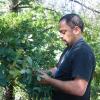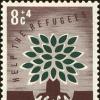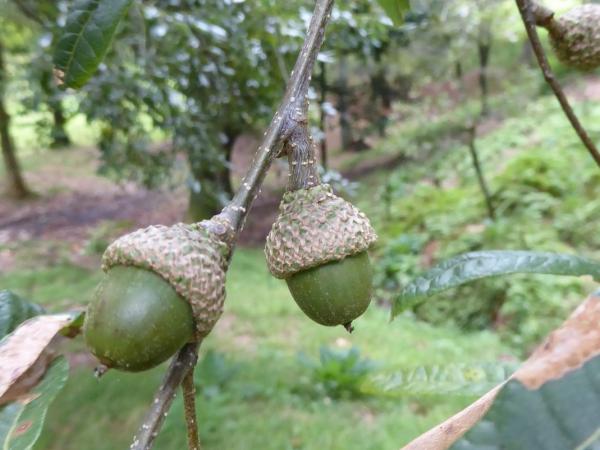Editor's Picks
Plant Focus
The Lyytikkylä Oak in Finland
The Lyytikkylä Oak is still the thickest oak in Finland, although it has been in decline for the last century, and only a short trunk remains of an oak that was extensive only 80 years ago. It stands in Southwest Finland, in Niemenkulma, a rural locality near Kaarina. The name of the oak and the house from which the name originates is sometimes written Lyytikkälä or Lyydikkälä, but here we use the name found on current maps.
According to local oral memory, the Lyytikkylä Oak is 600 years old. Since the oak has been hollow for a long time and we have no early written history of it, its age cannot be precisely determined. In the close neighborhood of the oak there is a hill called Pyhävuori (“sacred mountain”), an ancient sacrificial site. This could imply that the oak may have been used for sacrifices, although Southwest Finland was Christianized at least 900 years ago. Yet even in modern times, baptisms and weddings have been carried out under the tree.
Most areas of current Finland were part of Sweden from at least 1321 until 1809. Even after that, the former Swedish law was applied. Already in the Magnus Erikssons landslag (Country Law of Magnus Eriksson) passed around 1347, the felling of oaks was forbidden in favor of shipbuilding. In 1558 King Gustav Eriksson Vasa issued an ordinance that decreed that no one except the King was allowed to chop, fell, break, or bark either oak or beech on crown or tax land. However, some major events caused a drastic decrease of tall and old oaks. One on them was the invasion by Russia during the Great Northern War in 1714–1721 when the Russian military felled many large oaks on the southern coast. Some of the old oaks remained, maybe those with less utilitarian value. The law protecting oaks in Finland came to an end only in 1886.

The red dot marks the location of the Lyytikkylä Oak.
Common oak (Quercus robur) has a natural distribution in Finland that follows the southern coastline, from the Åland Islands to the line Uusikaupunki–Hamina but it has been established south of the line Rauma–Tampere–Lappeenranta. It can be grown a few hundred kilometers up north, to Oulu (65°N, 25°30’E), potentially also to Tornio at the northern end of Gulf of Bothnia, and in the interior of the country at least to Iisalmi (63°34’N, 27°11’E) in Eastern Finland. The oldest and largest oaks occur in the natural range.

The first known report of the Lyytikkylä Oak was published in the newspaper Päivälehti (nowadays known as Helsingin Sanomat) on the 6th January, 1900, signed with the initials K.A.E., here translated into English: — A gigantic oak in Finland. This spectacular tree can be found in the garden of a house called Lyytikkälä in the Piikkiö parish. Its girth is 9 meters and the branches extend over 18.5 meters. This tree is hollow inside. We were 5 adult men and we fitted comfortably sitting and standing there. The locals tell that young rascals visit it to play cards. However, the tree does not seem to mind it. He stands tall, stately and bright-leaved, as if he would whisper to a stroller who is fighting for his life: “Many storms have I endured, many winds have buffeted me, but still I stand strong and bless my Creator for my long life, though the course of time has made of me a hollow cave for playing cards."
In 1924, the girth of the oak was measured to be 8.40 m, and in 1936 the diameter was reported to be 2.70 m, which would count as an 8.5-m girth. The Piikkiö parish history from 1935 tells that the venerable old tree was badly rotten and damaged by the storms.
The previous master of the house, Leo Neuvo, recounts that before 1940 the tree was so large that it could hold 24 Boy Scouts inside. He has said that towards the end of the 1940s a parquet factory wanted to buy the wood and promised to cover his house with a new tin roof to cover the cost. Fortunately, he did not sell it, although there was a shortage of oak wood because of the lack of imports at that time. Apparently the tree suffered during the 1940s, since in 1943 the oak had a 7.60-m girth and was described as a “tree ruin”.
In 1985, the Lyytikkylä Oak had a 7.55-m girth (8.11 m at 1 m height) and it was 10 m tall; at that time, the top had definitely collapsed. According to the 1991 measurement it had a girth of 7.66 m and it was 12 m tall. The trunk was broken at a height of 7 meters but it had grown a new top branch. The oak was openly hollow to 4.5 meters and the opening was 1.5 meters wide. But in the storms of the fall of 1997 the oak lost most of its remaining grandeur. The largest top branch was torn off just above a steel band that supported the trunk. In 2015, the oak had a girth of 7.78 m at breast height, and due to the missing top branch, it was now only 7.5 m tall.

Earlier, the oak had signs leading to it, but these have been removed to decrease the traffic on the narrow road to the oak, which is on private land close to the house, now hosted by Merja Ojala. The Lyytikkylä Oak has been included in an international research project studying the decline of ancient oaks.
Recently, a book on the largest—thickest and tallest—trees in Finland was published, Vihreät jättiläiset, Suomen suurimmat puut, (Metsäkustannus, ISBN 9789523380868) written by a group of members of the Finnish Dendrology Society (Dendrologian Seura), based on measurements done on behalf of the Society. The oak is still the largest single-trunk tree in Finland, measured at breast height.

The cover picture was taken by the author of this article.











